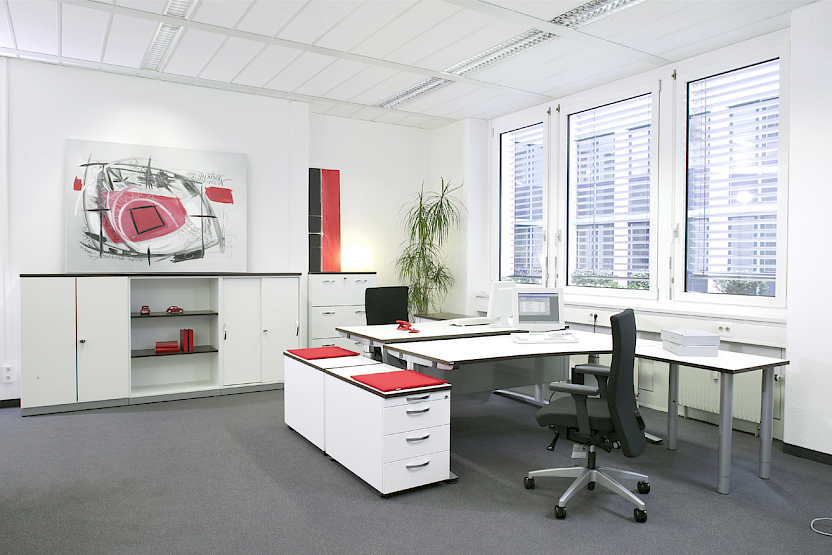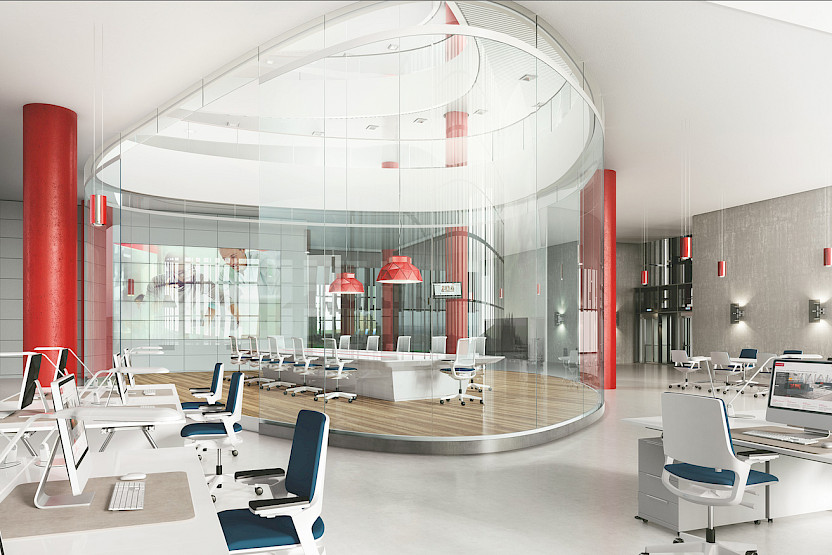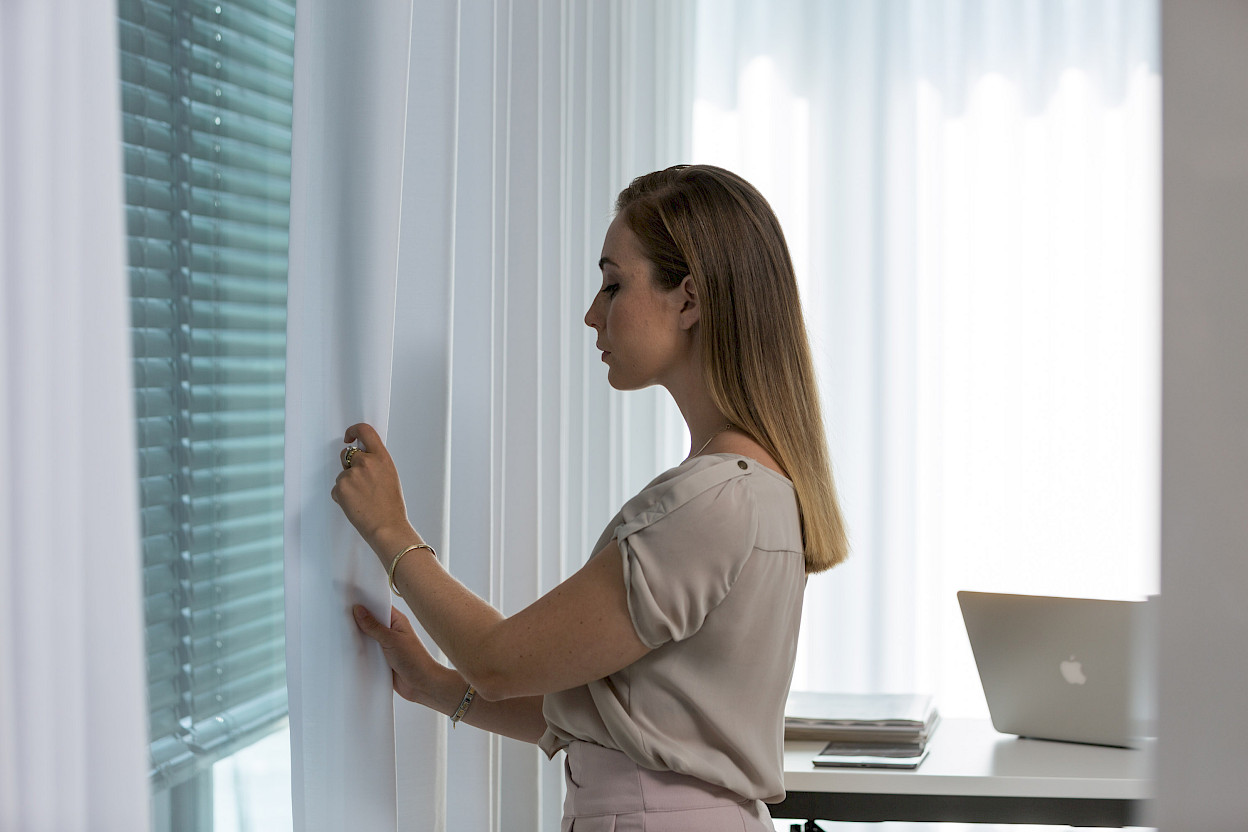Most people wish for as much daylight as possible at their workplace. In fact, daylight not only enhances well-being but also supports a healthy sleep–wake rhythm. Accordingly, the Technical Rule for Workplaces ASR A3.4 “Light” stipulates that workplaces – and therefore workstations – must be supplied with daylight. Specifically, it states: “Workplaces must receive as much daylight as possible.” Workstations without daylight are permitted only in exceptional cases.
Requirements according to ASR A3.4
The Technical Rule also specifies when daylight is considered “sufficient”. As alternative reference values, the daylight factor and the ratio of all transparent surfaces to the total floor area of a room are applied.
-
The requirement is deemed fulfilled if a daylight factor greater than 2% is achieved (at least 4% in the case of skylight illumination). The daylight factor D is defined as the ratio of the illuminance at a point indoors (Ep) to the unobstructed outdoor illuminance under a cloudy sky (Ea): D = Ep/Ea × 100 %
- The requirement is also deemed fulfilled if the ratio of all transparent surfaces (windows, transparent walls/doors or skylights) to the total floor area of a room is at least 1:10 (approx. 1:8 in shell construction dimensions).
In addition, ASR A3.4 makes the following recommendations:
- Workstations should be positioned as close to windows as possible.
- Windows and skylights should be glazed with materials that alter the light colour as little as possible.



Exceptions are only permitted if existing workplaces or specific job requirements do not allow for any other solution. In such cases, the employer is obliged to take this aspect into account within their risk assessment. Furthermore, they must ensure compensation elsewhere, e.g. in break rooms with plenty of daylight, and implement protective measures for employees. This also applies to emergency notification systems.
The requirement to supply workplaces with sufficient daylight expressly applies to common rooms such as break areas.
Shading
Light – and therefore daylight – can also cause glare. For this reason, most office spaces require shading or light-directing systems.


Further descriptions of shading systems and their advantages and disadvantages can be found in DGUV Information 215–444 Sun protection in the office.




